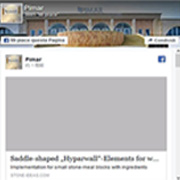Back to Basics: F Connectors
The F connector is the most common video distribution connection. This is the friendly chrome-plated connection and by letting you connect the cable to the box you can use an antenna, cable, or satellite.
F connectors are located at the ends of coaxial cables, and they provide a secure, weatherproof seal that protects the connection from radio frequency interference.
What's so special about coaxial cables?
On coaxial cable, the center portion of the cable also serves as part of the connector, so it's important that the outside of the connector shield it properly. This is why push and crimp connections have fallen out of favor. Use a special compression tool to lock the connector onto the cable while making sure the shield on the outside of the cable is not damaged.
The definition of coaxial cable is very precise. The name of the cable can tell you more about whether it is suitable for your application.
It is important to use the correct cable to ensure that the signal traveling along the cable will pass through a good and strong transmission.
F connector type
There are three basic types of F connectors: twist, crimp, and compression. Twist-on connectors are typically only used for wireless antennas.
Crimp connectors are rare these days. They use a special tool to apply pressure to the connector. A properly prepared crimp-style connector is one of the best connections you can make, but getting it right takes practice. Technicians today use compression connectors.
The compression connector also comes with a special tool that pushes the rear end to the front for an extra tight seal. This seal is best for protecting the signal and preventing water and dust from entering the connector.
How to connect the F connector
In most cases, "finger tight" is sufficient for the F connector. You never want to overtighten the connector as the internal connections may be affected. If there is, just finger-tighten one-eighth turn.
Weather boots can be used for extra protection when attached outdoors. This prevents corrosion from reaching the outside of the connection.
F-connectors use a 7/16-inch open-end wrench, so if you're disconnecting an F-connector, it's best to have a wrench handy. Because it's a metal-to-metal connection, it can sometimes be difficult to remove with your hands alone.
Unlike other connectors such as RCA or BNC, the F connector is not named after its creator, nor is it named for its size or construction like 1/8-inch TRRS (often called a phone plug). It was probably named because it originally carried UHF or VHF signals to TVs.
The above briefly introduces the F connector. If you want to buy wire connectors, please contact us.
SOMI is a professional custom antenna accessories manufacturer. We are a professional manufacturer of wire connectors, CATV amplifiers, CATV splitters and splitters, satellite splitters, CATV wall sockets (terminal boxes), and other high-quality CATV system accessories, audio video connectors, and connecting cables. We have our own engineers, so we can design and produce products according to customers' requirements. All products are produced by automatic machines and thoroughly tested to ensure the quality of our products.
coaxial cable f connector crimp type nickel plated with o ring water proof
F male connector gold plated crimp type





